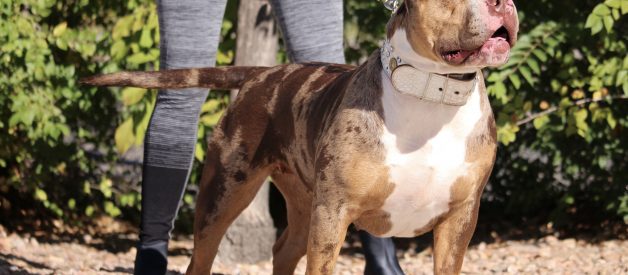THE HEALTH PROBLEMS ASSOCIATED WITH THE MERLE GENE MUTATION
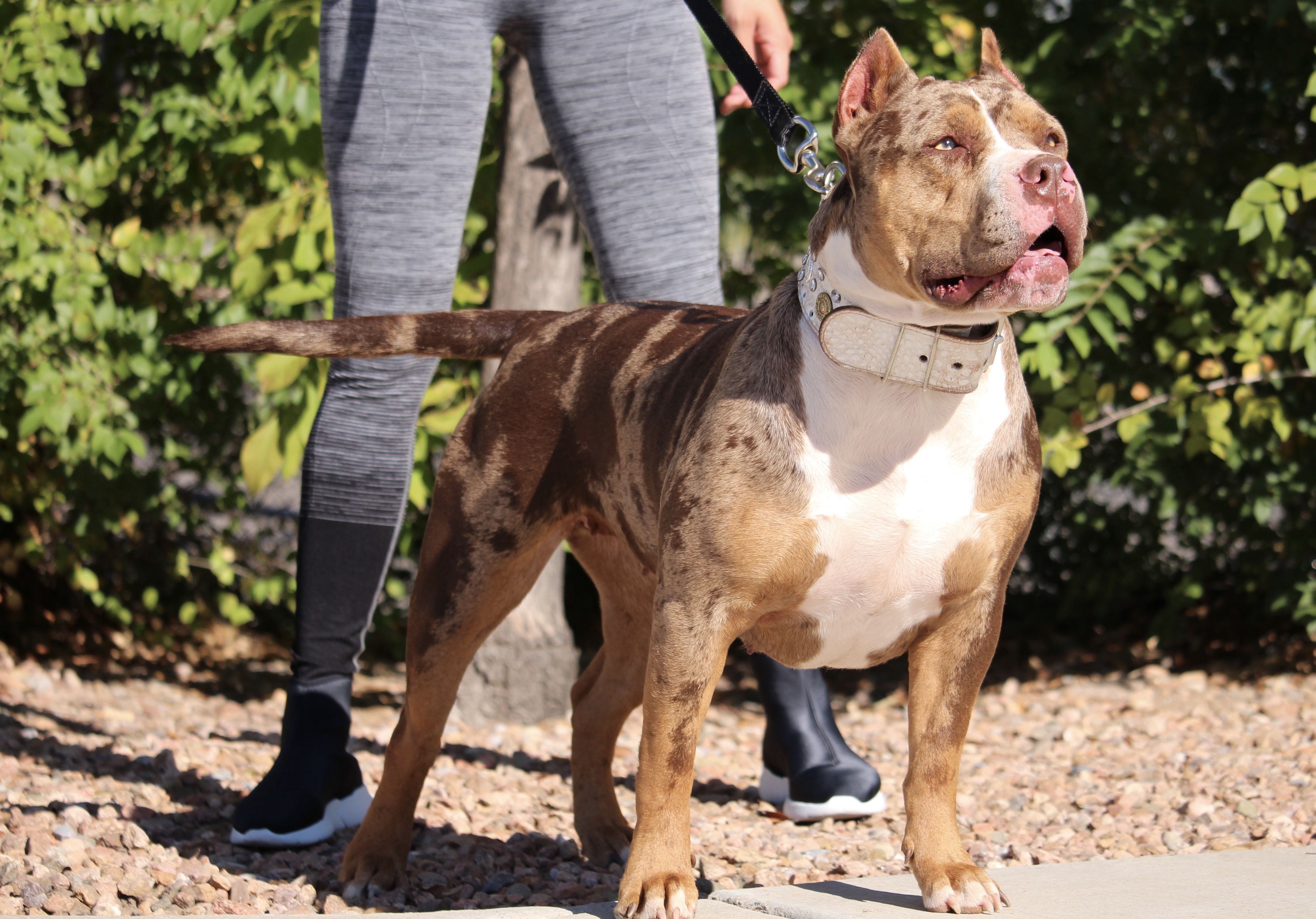
In certain breeds of dog, there is a coat pattern known as ?merle?. It is sometimes referred to as a color, but is in fact due to a gene that alters the way pigment appears in the dog?s coat. The merle coat pattern is popular because it is unusual and very unique, with each merle dog having a different coat pattern.
Unfortunately, there are health problems associated with the merle mutation and the risk of these problems occurring increases when two merle coated dogs are mated together. The resulting litter of puppies has a high chance of containing ?double merles? or ?lethal whites?, dogs that have very little or no colour to their coat at all. Double merles are highly likely to suffer from eye or ear deformities (in some cases both), which at the most extreme can result in complete blindness and deafness.
Needless to say, the deliberate breeding of double merles causes a lot of controversy in the canine world ? certain official bodies (such as the Kennel Club in the UK) have clamped down on the practice, refusing to register dogs that are a result of merle-to-merle breeding. This article explores the world of double merle genetics, the breeds affected, the health issues and the wide range of ongoing debates concerning the breeding of double merles.
WHAT IS A MERLE?
 Merle in the American Bully Breed
Merle in the American Bully Breed
A dog with a merle coat is characterized by having patches of hair with diluted pigment (color). Though a variety of merle colors are referred to by breeders and dog owners, the two most commonly seen types of merle are blue merles and red merles. Blue merles are, in fact, grey. They appear like a tri-color dog (black, white and tan), but with patches of the black appearing ?faded? or grey.
Similarly, a red merle will have faded patches of red and will often look more mottled than the blue merle. While all of the breeds with the merle coat pattern produce blue merles, only certain breeds produce red merles. The strength of the other colours in the dog?s coat (tan and black, or red and tan) can vary as well, with some merles appearing to have extremely pale colouring all over, while others can have quite strong patches of colour. Blue merles with no tan markings at all are known as bi-blues, but a red merle does not necessarily have to have tan markings.
Merles commonly have blue eyes. Sometimes they have one blue and one brown eye. They can also, on occasion, have two brown eyes. Sometimes dogs may appear to have normal coat colouring but are in fact merles and will produce puppies with the merle colouration. These are known as ?cryptic merles?, but the exact reason why such dogs do not display the merle pattern remains unknown.
The merle gene is usually dominant, so a merle dog will have inherited the gene from one of its parents. While a non-merle dog (unless a cryptic) will have inherited no merle gene.
For example, in a litter of mixed colour puppies the non-merles will be (mm), while a merle will be (Mm), meaning it has inherited one merle gene and one non-merle gene.
HEALTH PROBLEMS ASSOCIATED WITH THE MERLE GENE
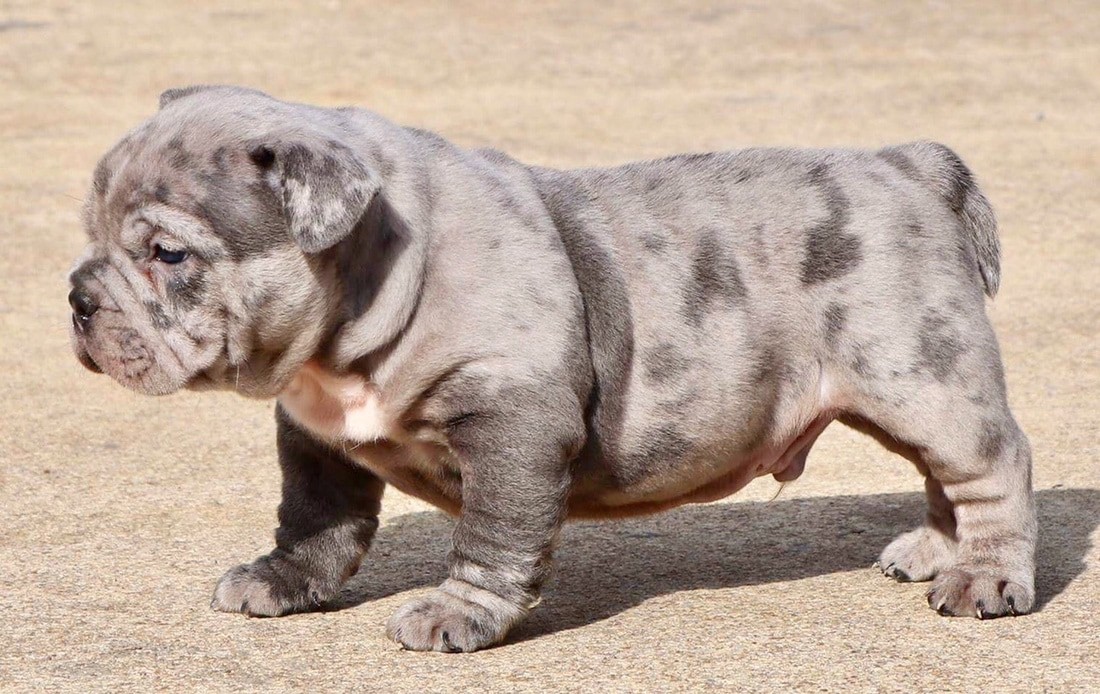
There is scientific evidence to suggest that the merle gene may be linked to a higher rate of ocular (eye) or auditory (ear) problems. A 2006 paper on the merle gene first published by the National Academy of Sciences of the United States of America attempted to identify the gene in dogs that caused the merle pattern.
Among their findings they recorded research on deafness in Dachshunds with the merle gene. One study reported 36.8% of Dachshunds with the merle coat pattern (Mm) suffered hearing problems ranging from mild to complete deafness. While none of the control group of non-merles (mm) had any hearing issues.
Another study found that merles had a ?significantly greater? frequency of eye abnormalities than non-merles. Other studies cited by the article found that the merle gene was associated with skeletal, cardiac and reproductive abnormalities, but there is far less conclusive evidence for this.
THE DOUBLE MERLE
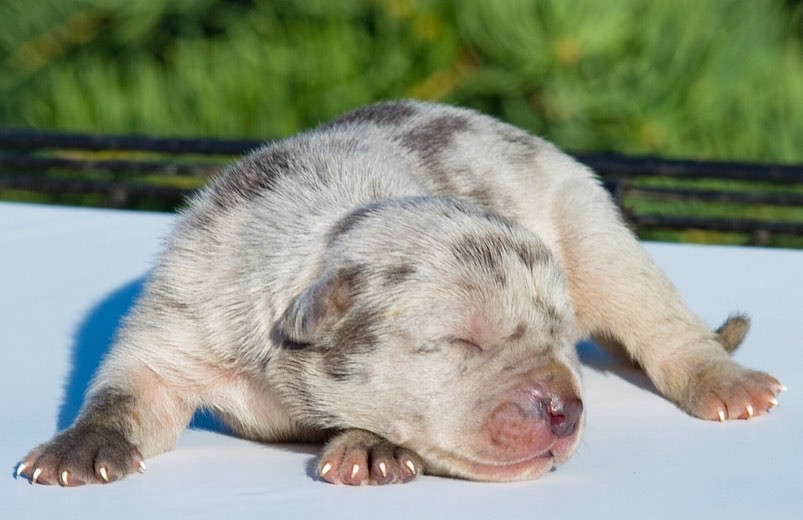
The merle pattern is produced when a dog has a single copy of the M< allele. All merle dogs have the genotype Mm ? meaning they have one allele for merle and one allele for non-merle. All non-merles are mm. If you breed a merle (Mm) to a non-merle (mm) you will on average produce a litter in which a half of the puppies get the M allele so are Mm (merle) and half get the non-merle allele so are mm.
But if you breed two merles together (Mm X Mm) you will produce on average a quarter mm (non-merle), a half Mm (merle) and a quarter MM (double-merle; also called double-dapple). And double merles don?t look like merles. Instead, they?re mostly white with merle patches. But the main reason you want to avoid producing MM dogs is that they often have visual and auditory problems.
A double merle is created when two merle dogs are bred together. It doesn?t matter what color merle or what breed they are. If two merle dogs are bred together, each puppy in the litter has a 25% chance of being born a double merle.
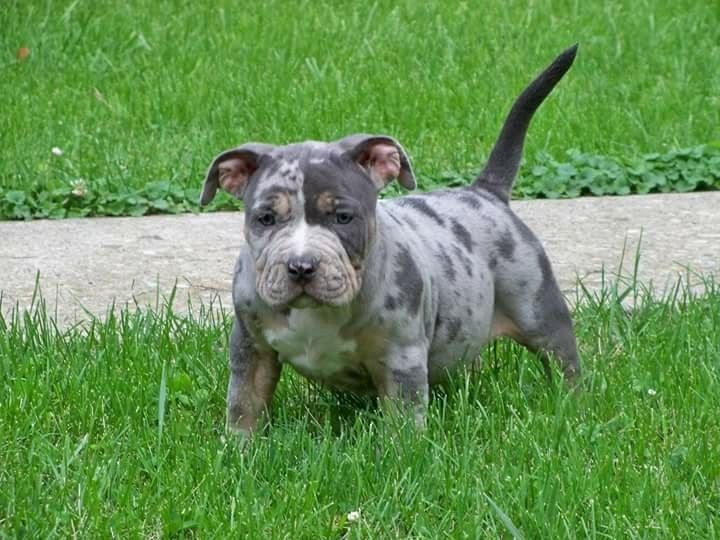
A double merle inherits the merle gene twice. One copy of the merle gene causes a marbling effect on the coat and creates lighter spots throughout the solid color coat. In a double merle, the marbling/lightening effect is doubled and the coat becomes predominantly white. Double merles also have a very high chance of being deaf, blind, or both because they lack pigment where it would normally be.
The pups that do not inherit the gene twice are ?normal? dogs. Their coats are normally marked and they are not plagued with hearing or vision problems. These are the pups that a breeder wants, because they can profit from these pups. The double merles are often killed at birth just for being white, when it is still too early to tell if the dog will have any hearing or vision problems.
Some breeders just assume, and many ?cull? (kill them at birth) because they know that no one is going to pay for a ?defective? dog and this would also reflect poorly on their breeding program. If they aren?t killed, they are often sold as rare white to unknowing customers. Many of these pups eventually end up in a shelter and some even end up being used as bait dogs by dog fighters. Once these dogs wind up in a shelter, as many do, they still face death because no one wants a ?defective? dog, making adoption extremely difficult.
BREEDS IN WHICH THE MERLE COAT IS ACCEPTED
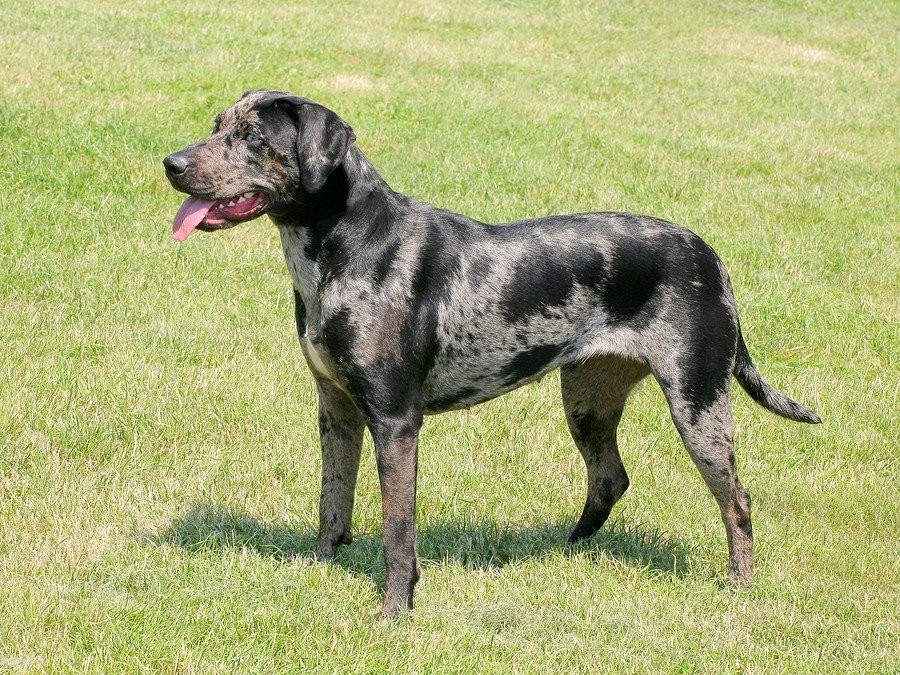
The following breeds carry merle and are recognized by the AKC as an acceptable color: Australian Shepherd, Border Collie, Cardigan Welsh Corgi, Catahoula Leopard Dog, Chihuahua, Cocker Spaniel, Collie (rough or smooth), Dachshund (called dapple), Great Dane (harlequin acts the same), Mudi, Old English Sheepdog, Pomeranian, Pyrenean Shepherd, and Shetland Sheepdog.
The merle gene is being introduced into new breeds everyday. Merle is now present in Poodles, Bulldogs, American Staffordshire Terriers, American Pit Bull Terriers, American Exotic Bullies and Australian Koolies. It?s becoming more prevalent in many of the newer ?designer breeds.? There is an overabundance of these dogs and it?s truly heartbreaking. There are rescues all over the country that are committed solely to rescuing these dogs, that should speak volumes in itself. These dogs are 100% preventable. Don?t breed two merle dogs, and you won?t have double merles.
BLUE MERLE CONTROVERSIES
The question many ask is, if breeding merle to merle has such a high chance of producing a disabled puppy, why would anyone do it?
There are several answers to this question, the first being pure ignorance. Not everyone knows the risks of breeding two merles together. Ideally anyone selling a merle puppy should explain to the new owner the risks associated with breeding merle to merle, especially if that person already has a merle dog of the opposite sex to the puppy. But as this is unlikely to happen, accidental creations of double merles will continue to occur.
CAN DOUBLE MERLES BE PREVENTED?
As long as there are merle coated dogs, double merles will be produced, usually by accident or through ignorance on the part of the breeder. However, a great deal can be done to discourage the breeding of double merles and to educate the public on the dangers.
Official bodies and Kennel Clubs can lead the forefront in discouraging the deliberate breeding of double merles, but educating puppy buyers would also help. Unwary puppy buyers are sometimes sold double merles as ?rare white? or ?albino? versions of a certain breed, not knowing that the pup may prove deaf or blind. Equally, pet owners with two merles may breed their dogs without realising the consequences. Spreading the word about what a double merle is, is just part of the answer.
M FOR ?MARKETING?.. OOPS WE MEAN MERLE
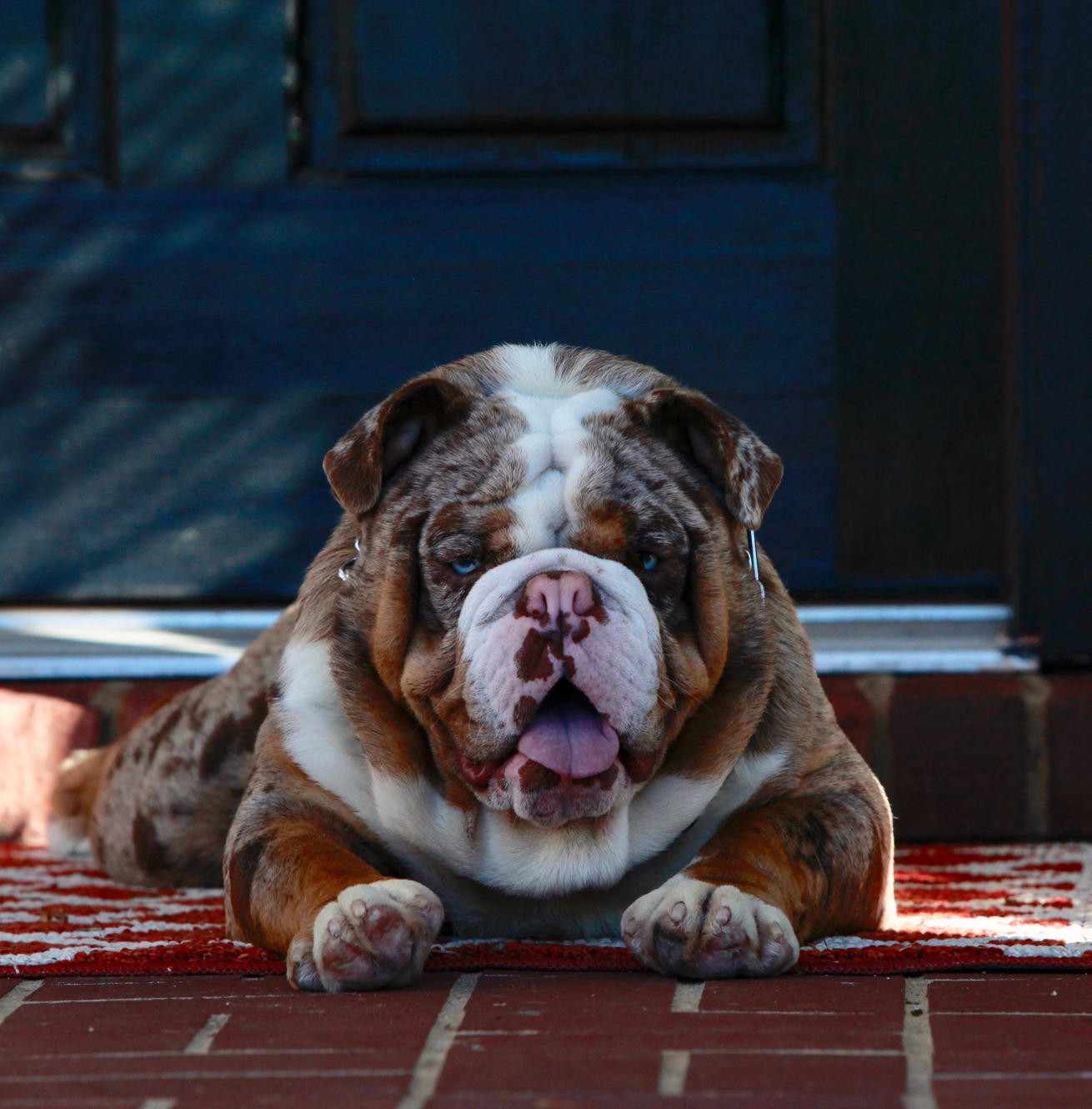
Today, many of the bully breeds are facing a very disturbing trend with the appearance of Non-Standard colors, something the founders of our breed could not possibly have anticipated. We are seeing an alarming increase in the numbers of breeders purposefully breeding for and advertising ?exotic?, ?fad? or ?rare color? Bulldogs. This color phenomenon is fairly recent, appearing within the last 10 years or so.
These rogue breeders have capitalized on recessive color genes, DNA test their dogs for those recessive colors, and very likely engage in outcrossing with other breeds, to intentionally and prolifically produce Non-Standard colored Bulldogs. They breed strictly for color, at the expense of and disregard to conformation, health and temperament. They charge outrageous prices for puppies, dogs and stud fees.
The problem stems from unscrupulous breeders and AKC?s practice of registering these Non-Standard colors. While the paper registration form shows correct colors and markings for our breed, the online registration form includes a whole host of additional ?Non-Standard? colors and markings, as does the Bulldog breed information page on the AKC website. These non-Standard colors are WRONG and should not be listed on these AKC online resources. Adding to the problem is the wording in the BCA Written Standard on coat color. Although our Standard does not clearly define non-Standard colors as a disqualification, experienced and knowledgeable dog men and women know the intent and meaning behind the words, which carry significant weight.
The current wording in the BCA Written Standard for color is ?preferred? colors, and black is ?highly objectionable?. Our only disqualification is a Brown or Liver-colored nose. It is clearly understood by anyone who knows the breed, its history, and understands the Written Standard that non-Standard colors are not acceptable. Color breeders twist the intent of our Standard and use the lack of a DQ as a platform and argument to promote their breeding of non-Standard colors as ?acceptable by AKC?. Even more disturbing, this is becoming a much broader issue with non-Standard colored dogs appearing in other countries, as well. They are showing up in Canada, England, France, Australia, Mexico and many South American countries.
COLOR BREEDERS
So, what is wrong with breeding for color? When you breed solely for color, you can very quickly lose the very characteristics which make our breed so special: their particular conformation, their wonderful temperaments, and good health. If you disregard all of these traits solely for color, double up on bad traits through both parents, the likelihood of perpetuating bad traits is very high. A by-product of selective color breeding is a Bulldog population that is conformationally incorrect, has many faults, and doesn?t look like a Bulldog, has a much higher frequency of health problems, and can be mean, overly sensitive, submissive, or highly unsocial, all of which gives our breed a bad reputation. This is NOT responsible breeding.
What began in the Bulldog has now trickled over into the American Bully breed as fad breeders have rushed to cash in on a marketing ploy to generate higher sales.
THE BOTTOM LINE
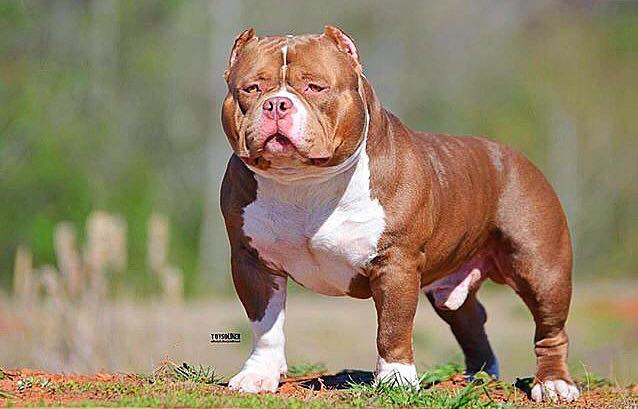 Top Studs & Programs will not breed to Merle American Bullies
Top Studs & Programs will not breed to Merle American Bullies
Although they have been popping up on social media as ?rare colored? American and Exotic Bullies, the Merle color has no place in the American Bully breed. Merle is a fad. It will pass, just like the many other fads that have crept up in the American Bully breed only to disappear later on. It is not an accepted color in the breed according to the American Bully Kennel Club?s (ABKC) breed Standard. The ABKC?s stance on merle dogs is as follows: ?It is a disqualifying fault. Disqualifying Faults: Merle pattern/blotched per competition.?
The Merle Coat Pattern has no place in the American Bully breed
Merle American Bullies are prone to eye and ear abnormalities, partial to total deafness and poor eye-sight due to intraocular pressure. Both issues are associated with the lack of pigment. Hearing loss is attributed to the absence of pigment in the eye passage hairs. Limited visibility or eye sight issues comes from visibly less pigment in the eye (lack of eye color). The MM type is also associated with abnormalities of the skeletal system, cardiac ( heart) and reproductive systems.
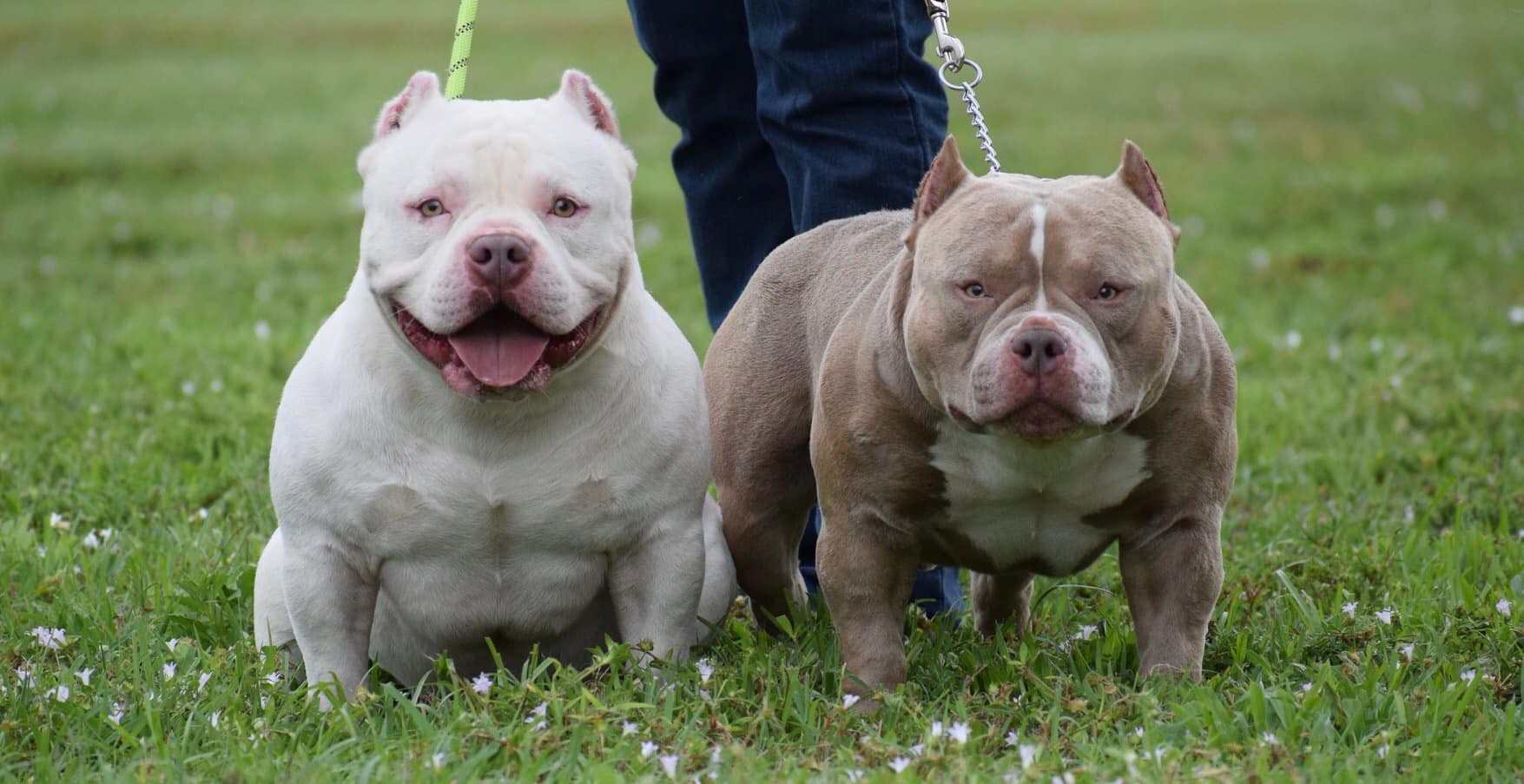 Top Studs & Programs will not breed to Merle American Bullies
Top Studs & Programs will not breed to Merle American Bullies
Respectable American bully breeders will not breed or ?Stud? or breed their American Bullies to merle dogs.
While many exotic & micro bully breeders have rushed to cash in on this short term fad- marketing their puppies as ?rare colored? it won?t have any longevity. It will eventually cause them to change course or threaten to destroy their breeding program entirely. Any respectable American bully breeder will not breed or ?Stud? or breed their American Bullies to merle dogs.
For full Access to BULLY KING Magazine Be Sure to Subscribe or Download the BULLY KING App Available in the iTunes App Store & Google Play!
BULLY KING Magazine Issues



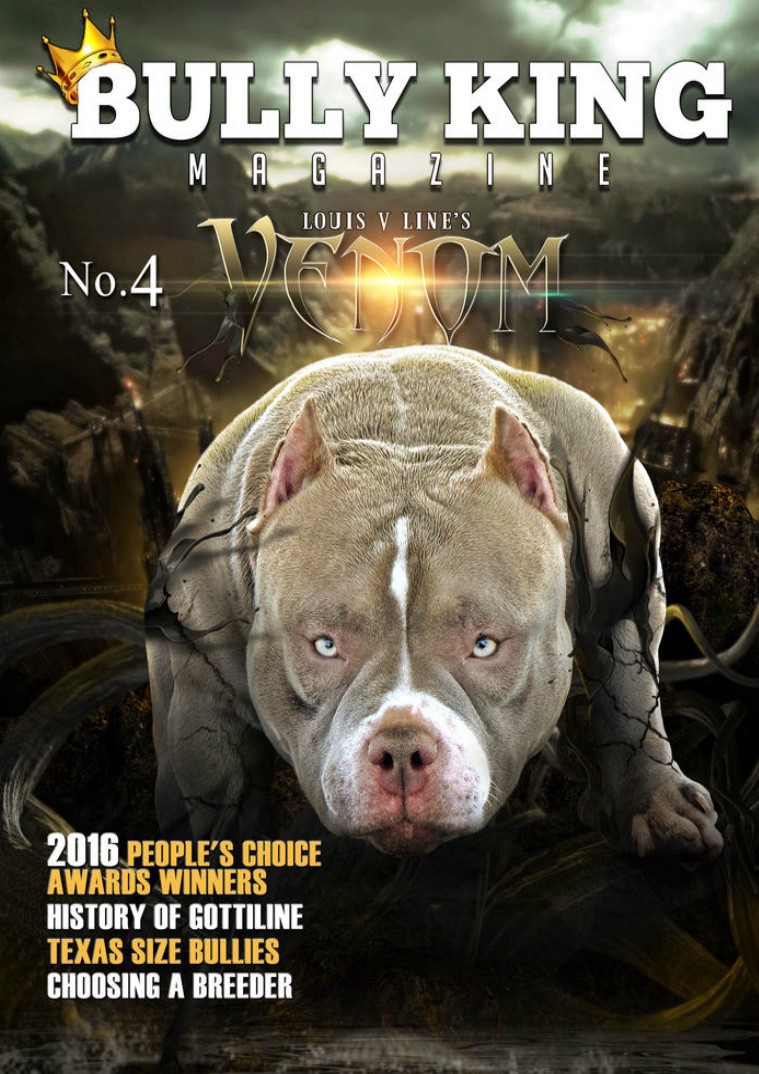

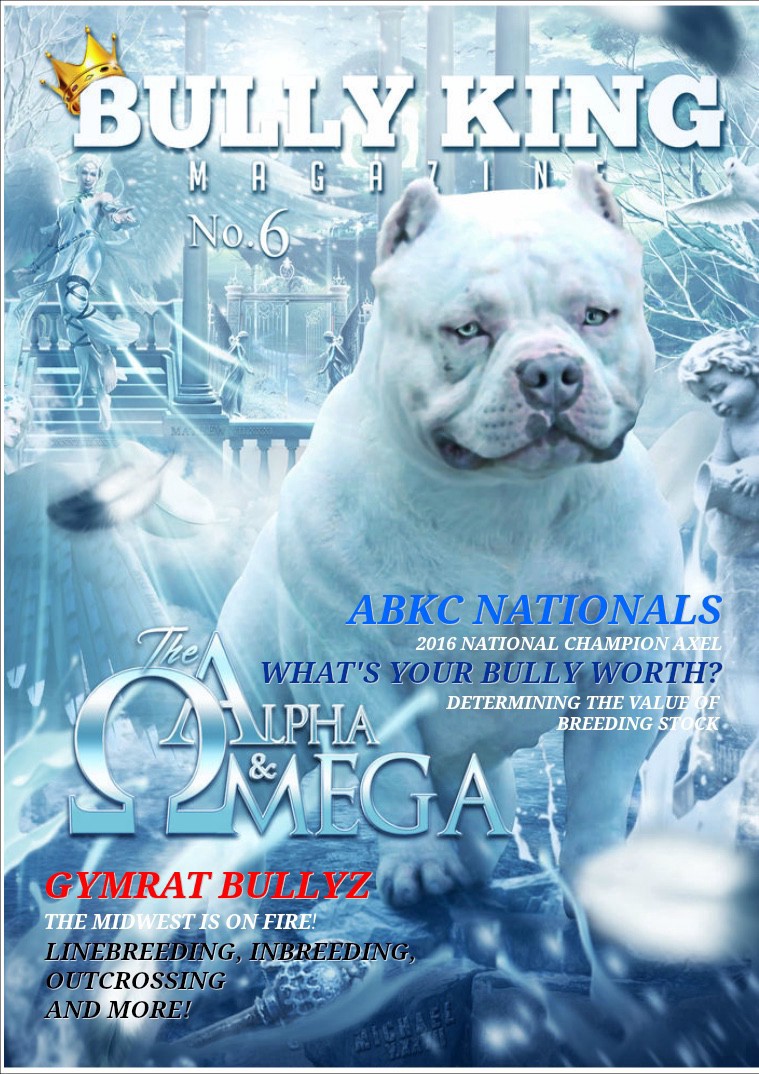
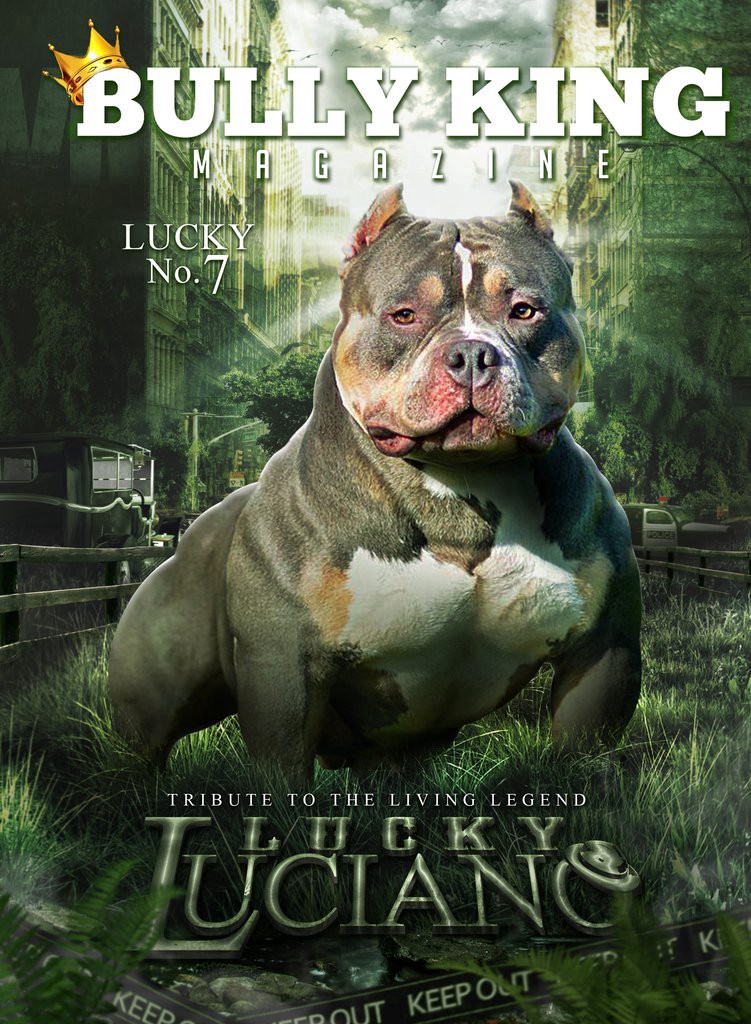
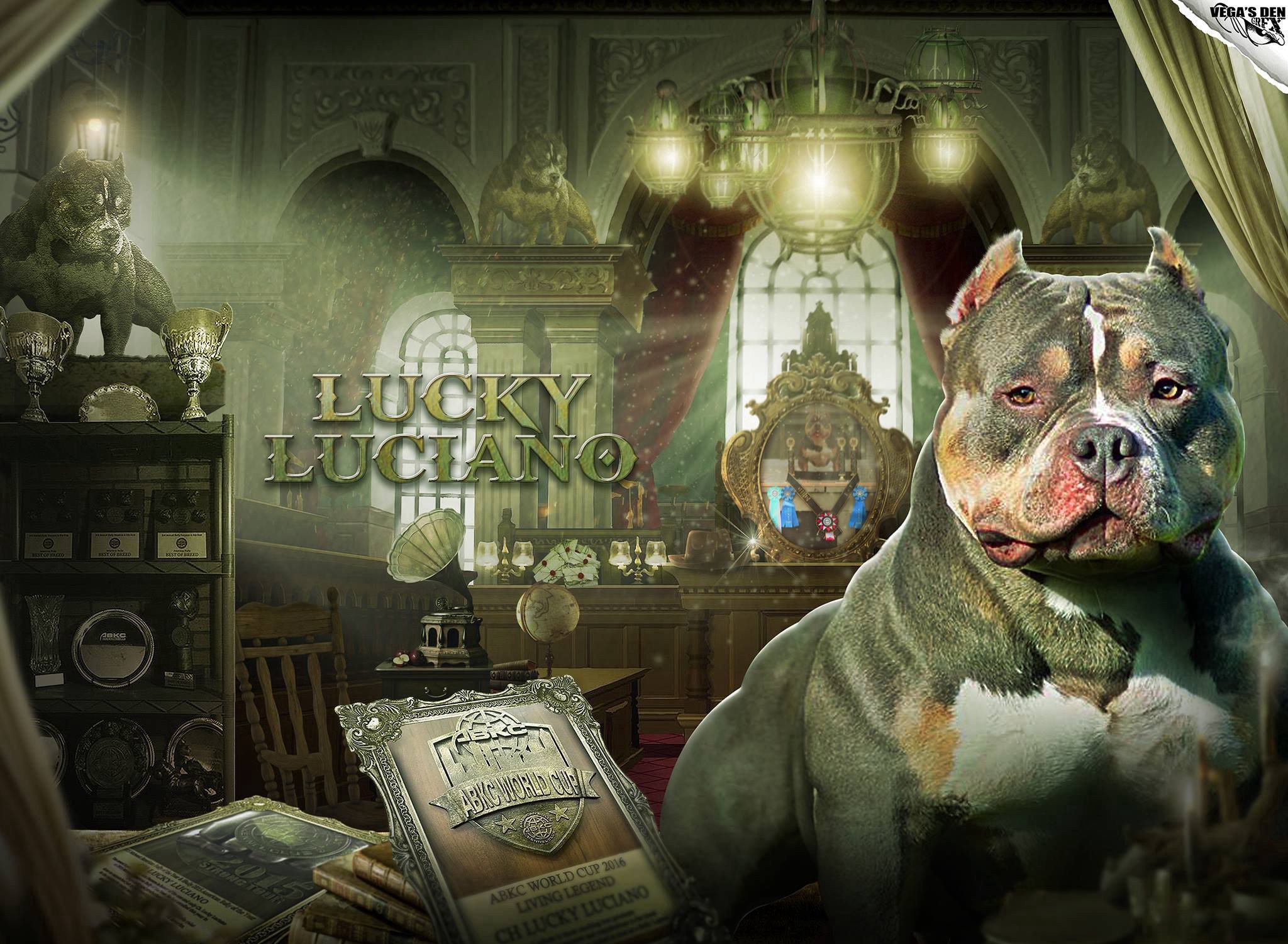
For Full Access to BULLY KING Magazine Subscribe Today!
BULLY KING | Year Subscription | 6 Issues Bi-Monthly
The #1 Bully Breed Magazine | News, Articles & Features on the Best American Bully?s | App Available in iTunes App?
bully-king-magazine.myshopify.com
BULLY KING | Single Issues
The #1 Selling International Bully Breed Magazine | News, Articles. Information on the best American Bully, Bulldog?
bully-king-magazine.myshopify.com
Digital Issues in The BULLY KING App
